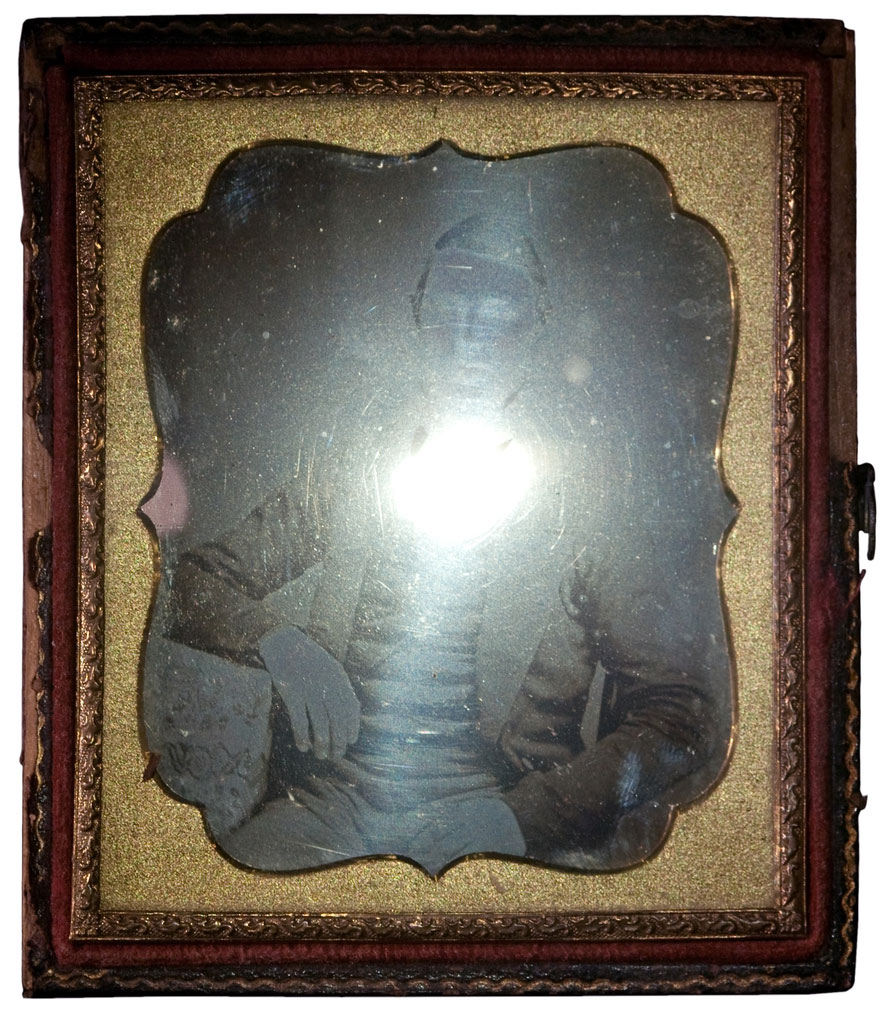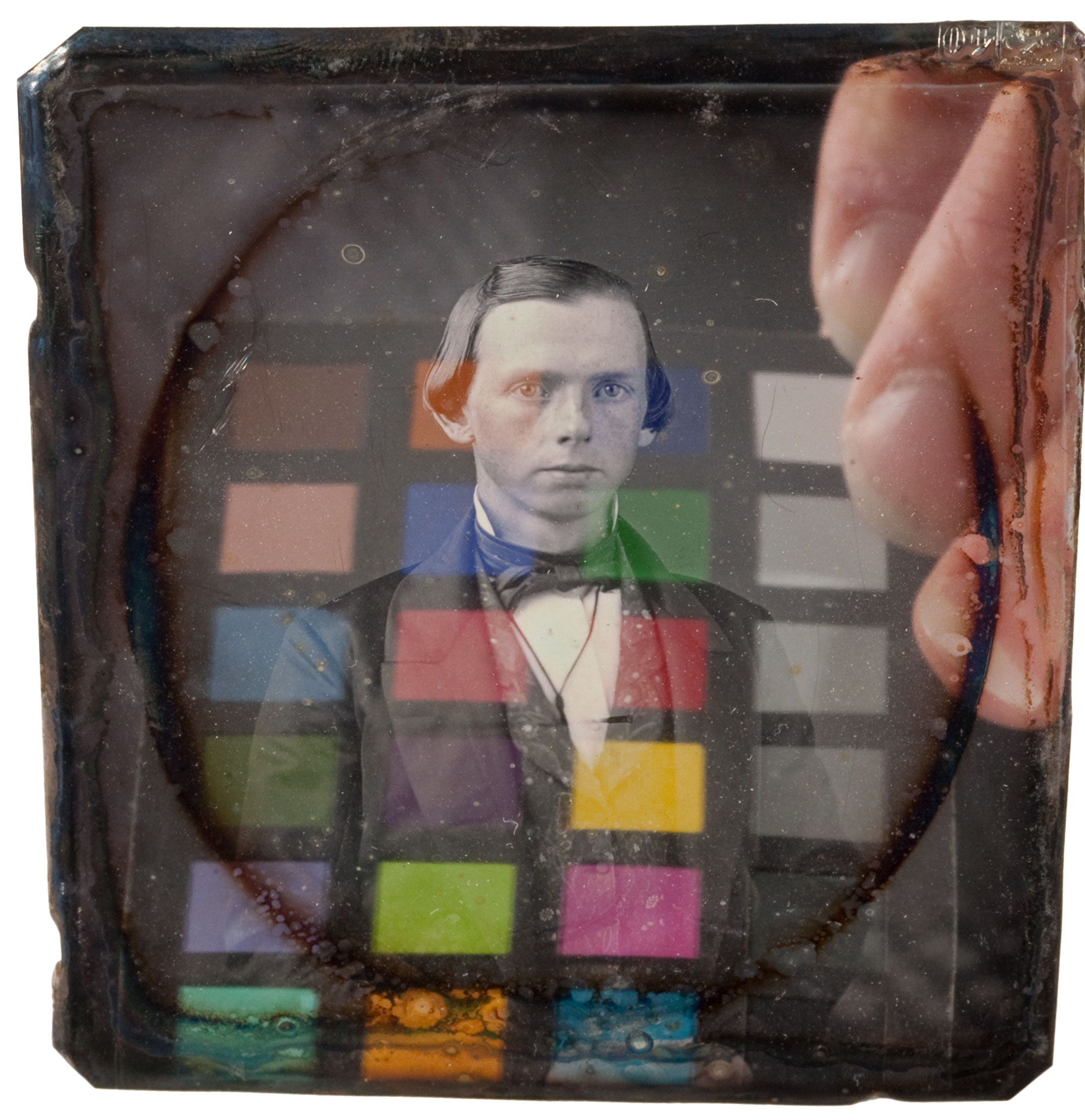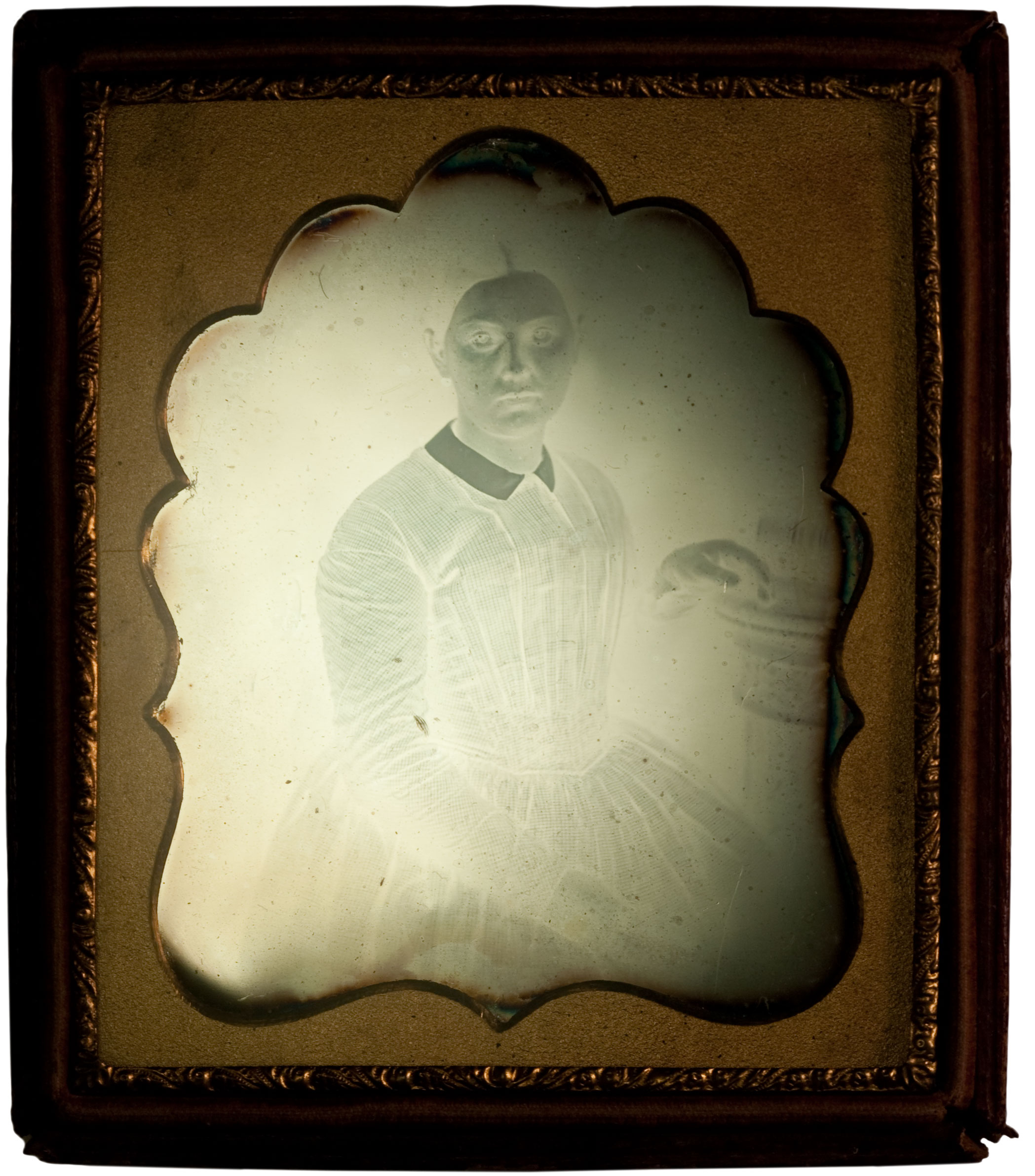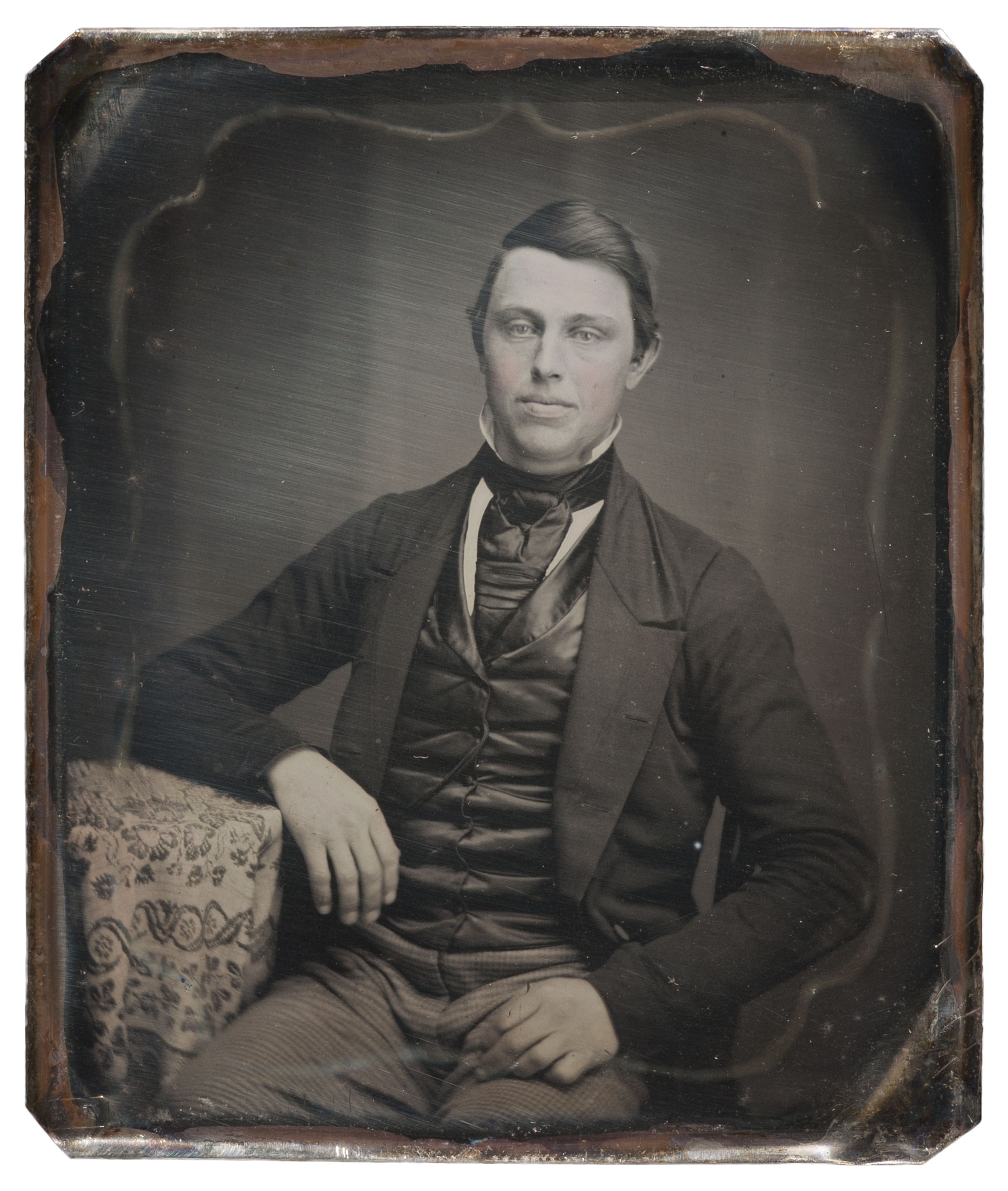Daguerreotype Surface View
Surface Sheen
To make a daguerreotype the silver surface was polished to a mirror-like shine, resulting in a highly reflective surface. After sensitization the plate was exposed to light in camera and then processed. The daguerreotype is considered a direct positive, however it is technically a negative because the image forming silver particles are in the highlights. Under axial specular lighting the image will have a high gloss surface sheen due to the mirrored surface. Axial lighting will also cause the image to be visible as a negative due to the reflective nature of the silver substrate and the way in which the image particles scatter light.
To make a daguerreotype the silver surface was polished to a mirror-like shine, resulting in a highly reflective surface. After sensitization the plate was exposed to light in camera and then processed. The daguerreotype is considered a direct positive, however it is technically a negative because the image forming silver particles are in the highlights. Under axial specular lighting the image will have a high gloss surface sheen due to the mirrored surface. Axial lighting will also cause the image to be visible as a negative due to the reflective nature of the silver substrate and the way in which the image particles scatter light.
What to look for: High-gloss surface; highly reflective, mirror-like; image seen as a negative.

Daguerreotypes have a high gloss surface sheen. They are polished to a mirror-like shine making them highly reflective.

Daguerreotypes are highly reflective with a mirror-like surface. Shown here is a color checker and hand reflected in the surface of the plate.

Axial lighting will also cause the image to be visible as a negative due to the reflective nature of the silver substrate and the way in which the image particles scatter light.
Surface Texture
The daguerreotype plate is very smooth, polished silver plated copper. However, daguerreotypes have characteristic polishing marks visible when viewed or imaged with the light coming from an angle opposite to the direction of the polishing marks. To make a daguerreotype a sheet of copper plated silver was polished until the silver had a mirror-like surface. The silver was first polished in a circular direction with cotton flannel and a slurry of rotten stone and alcohol making coarse circular marks. It was then buffed with rouge to give the plate a fine polish and remove the circular marks. The buffing apparatus could be a wheel or paddle consisting of a wooden handle, several layers of cotton flannel for padding, and covered with velvet or soft buckskin. The buffing was always done perpendicular to the intended image. For example, for a vertical portrait the buffing was done horizontally.
The daguerreotype plate is very smooth, polished silver plated copper. However, daguerreotypes have characteristic polishing marks visible when viewed or imaged with the light coming from an angle opposite to the direction of the polishing marks. To make a daguerreotype a sheet of copper plated silver was polished until the silver had a mirror-like surface. The silver was first polished in a circular direction with cotton flannel and a slurry of rotten stone and alcohol making coarse circular marks. It was then buffed with rouge to give the plate a fine polish and remove the circular marks. The buffing apparatus could be a wheel or paddle consisting of a wooden handle, several layers of cotton flannel for padding, and covered with velvet or soft buckskin. The buffing was always done perpendicular to the intended image. For example, for a vertical portrait the buffing was done horizontally.
What to look for: Smooth surface; polishing marks that appear as relatively fine or light scratches with intentional direction over the surface of the plate.

Daguerreotypes have characteristic polishing marks visible when viewed or imaged with the light coming from an angle opposite to the direction of the polishing marks.